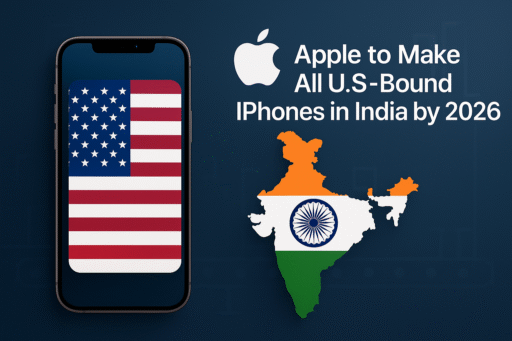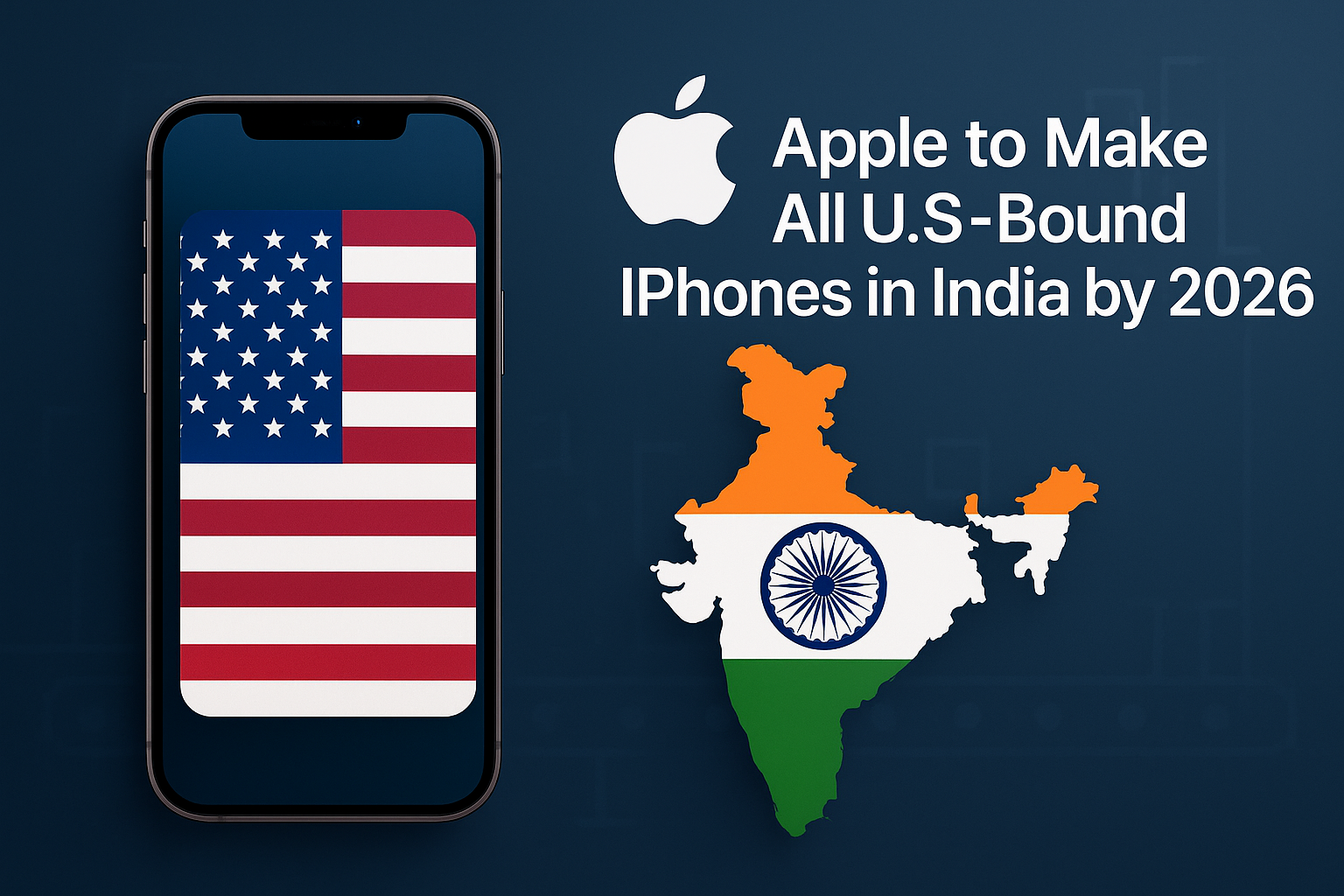For several months, Apple has been facing a major challenge: how to protect its business model in the face of the tariff war relaunched by Donald Trump? The answer could well come from a country experiencing a boom in manufacturing: India. The American giant is preparing an ambitious project to transfer the assembly of iPhones destined for the American market to this South Asian country by the end of 2026.
Pressure from trade tensions pushes Apple to review its strategy
Since the announcement of the new tariff measures in early April, the pressure on Apple has continued to mount. Its supply chain remains heavily dependent on China, the primary target of Washington’s new trade barriers. Although a slight lull in the negotiations appears to be emerging, fears of a worsening situation are prompting the company to urgently diversify its production sites.
China’s economic weight in Apple’s manufacturing base is colossal. It is in this country that almost all iPhones, iPads, and MacBooks are manufactured. Therefore, any customs sanctions against China directly threaten Apple’s entire model. To circumvent this risk, the Californian brand is considering a radical solution: moving all manufacturing of iPhones sold in the United States to India.
India: A bold bet to circumvent taxes
According to reports published by the Financial Times, Apple has decided to accelerate its investments in India to assemble all iPhones for the US market by the end of 2026. This project is not entirely new. For several years, Apple has been increasing local partnerships, notably with Foxconn and the Tata Group, to produce certain models there.
By manufacturing in India, Apple could reduce the impact of the new tariffs while benefiting from a skilled workforce and competitive production costs. Importantly, India does not face the same tariffs as China, although Donald Trump has also expressed his intention to impose tariff measures against New Delhi. However, these sanctions would remain, at least in the short term, much more moderate.
India also offers other strategic advantages: a young population, a government policy favorable to foreign investment, and a rapidly expanding domestic market that represents additional opportunity for Apple.
A titanic project strewn with pitfalls
Moving production of this magnitude doesn’t happen overnight. Apple faces several major obstacles. The first is logistical: it must create or adapt infrastructure capable of supporting the company’s quality and volume requirements. Installing new assembly lines, training thousands of workers, securing component supplies… all of this requires time, financial resources, and close collaboration with local partners.
Added to this is political and economic resistance. According to revelations from The Information, China is actively seeking to complicate the export of equipment essential to Apple’s production outside its territory. Beijing is reportedly restricting the export of machine tools and specialized assembly tools, and is pressuring suppliers to delay their expansion into other countries.
This standoff only reinforces the complexity of the Indian project. Because, in addition to the technical challenges, Apple must also contend with an increasingly unstable international climate, where every industrial decision becomes an eminently political gesture.
The American market: a vital issue for Apple
Apple’s haste is explained by the strategic importance of the American market. The United States accounts for approximately 28% of its global sales, or a quarter of its total revenue. Losing competitiveness in this segment would be an economic catastrophe for the company.
This is why Tim Cook and his team want to maximize their chances. The idea is not only to preserve access to the American market under favorable tax conditions, but also to strengthen Apple’s image as a company capable of adapting to global challenges.
Moreover, Apple could benefit from its image by manufacturing its iPhones in a democracy like India, rather than in China, which is often criticized for its human rights violations. This argument could appeal to some ethically sensitive American consumers.
A change that is part of a broader dynamic
The shift of production to India is not an isolated move. For several years, Apple has been gradually diversifying its supply chains, also installing some lines in Vietnam and Malaysia. This strategy aims to limit its dependence on a single country, particularly in such a tense geopolitical context.
India, for its part, intends to take advantage of this opportunity to become a genuine alternative to China in the global manufacturing sector. The Indian government is increasing tax incentives and administrative facilities to attract multinationals. By leveraging Apple, it hopes to accelerate its industrial rise and cement its place on the global economic stage.
For Apple, this Indian gamble is both a response to an immediate crisis and a long-term strategic choice. It remains to be seen whether the company will succeed in overcoming the multiple challenges that stand in its way of achieving this ambitious goal.




